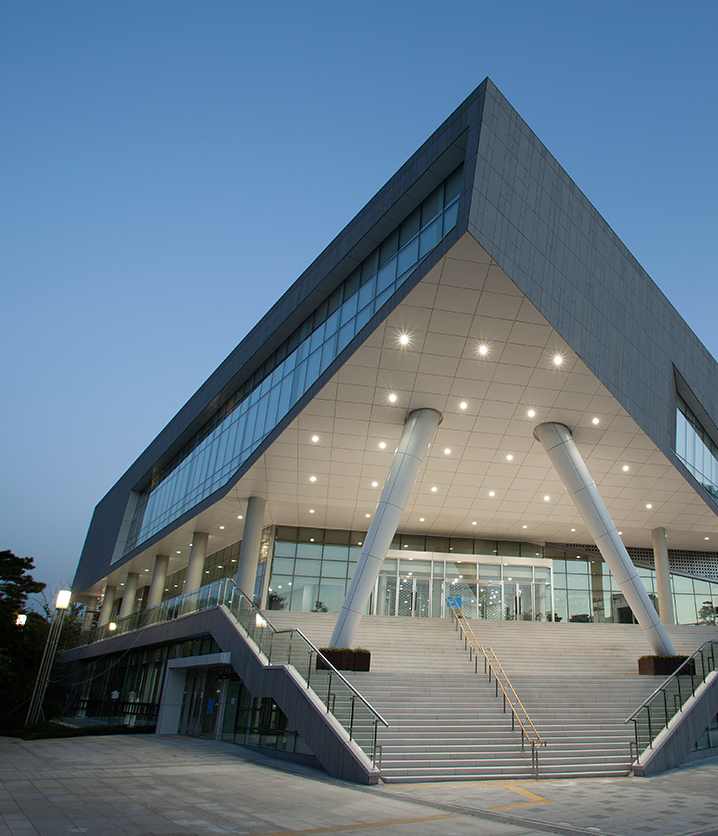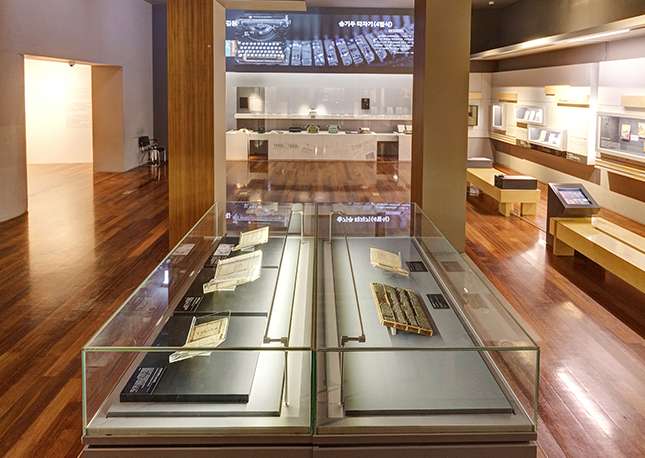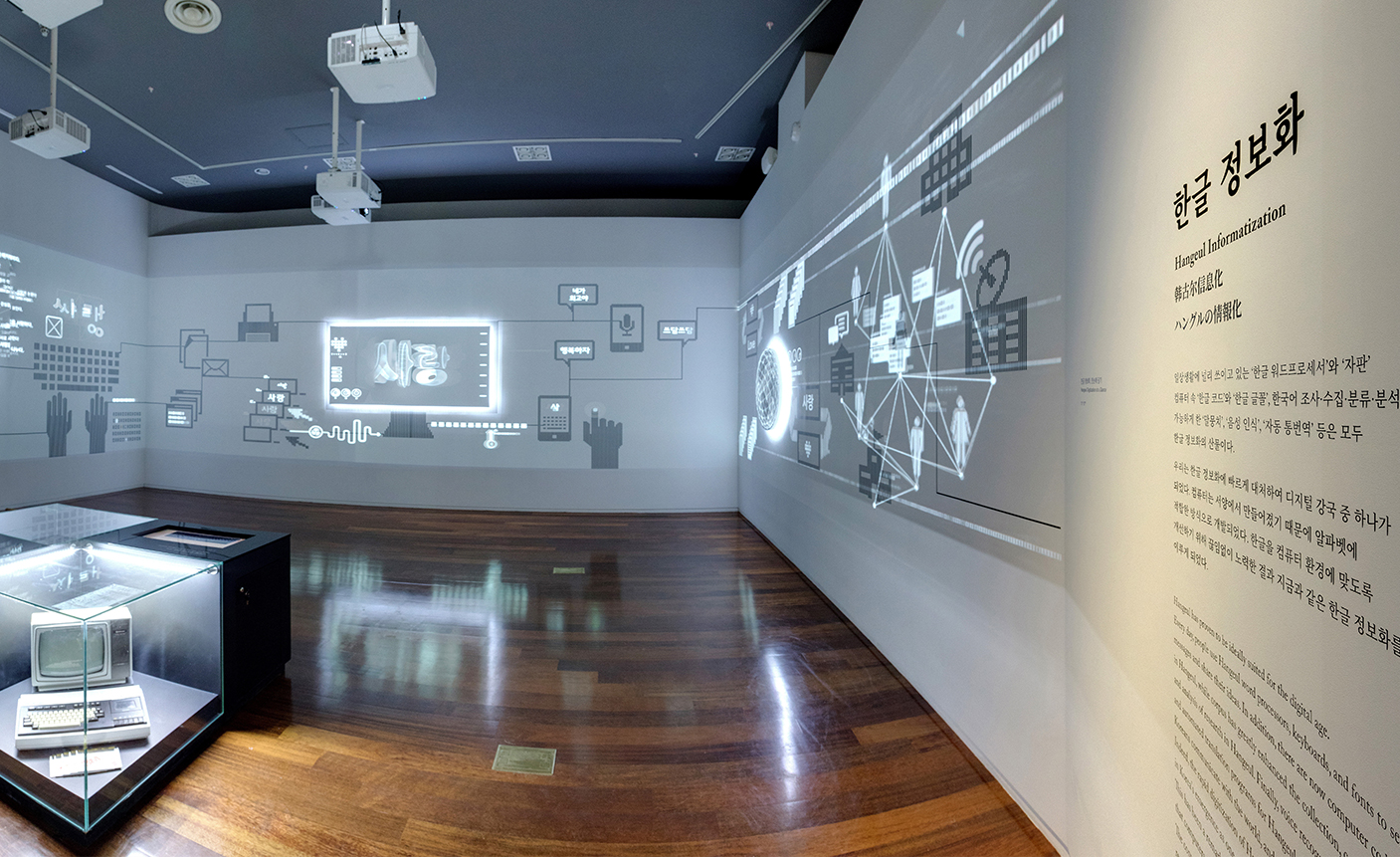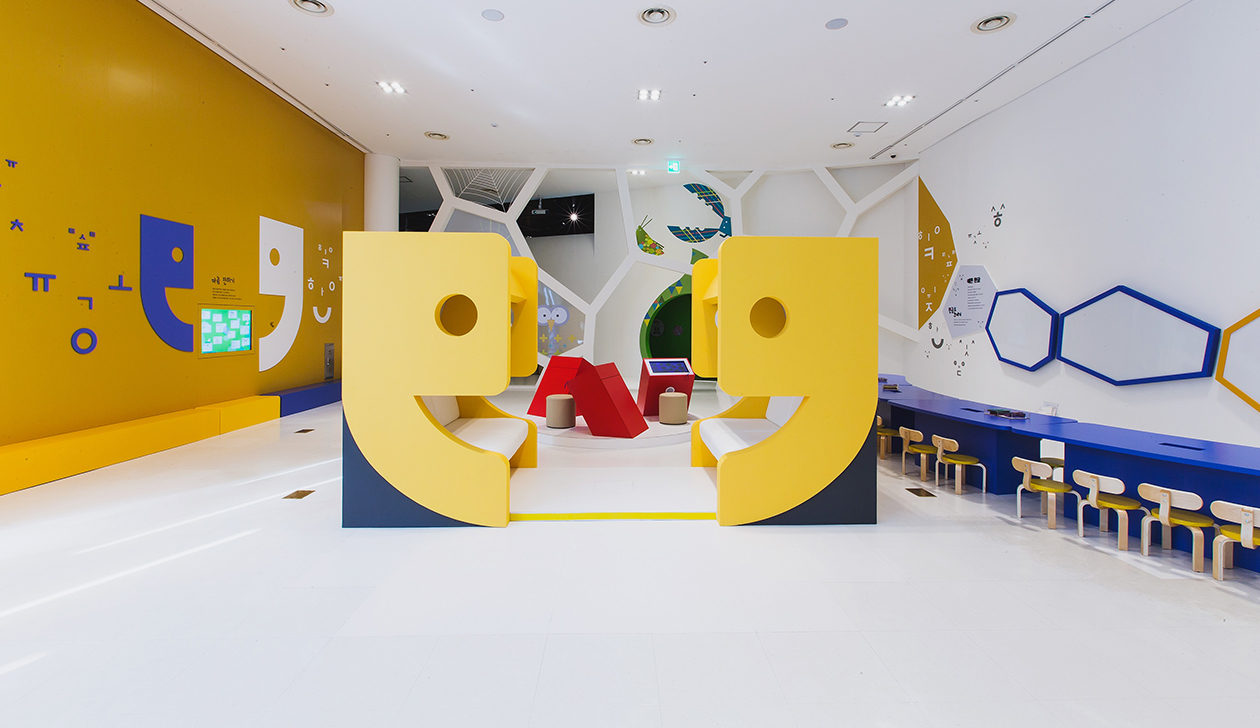VOL.56
September 2019


Trip — National Hangeul Museum
Hangeul,
Korea’s Proud Cultural Heritage
National Hangeul Museum
Hangeul is often praised as the most creative and scientific alphabetical system on the planet. The National Hangeul Museum was established with a mission to succeed in passing on King Sejong’s love for the people and to spread the excellence and culture of Hangeul, Korea’s proud cultural heritage. The museum offers opportunities to learn about the history and principles of Hangeul and to look into various uses of the Korean alphabetical system and its linguistic and cultural value.


Permanent exhibition room designed to preserve, spread and re-create the cultural value of Hangeul
The Creation of Hangeul
The museum entrance leads to the permanent exhibition room for “Creation of Hangeul.” This exhibition room completely visualizes the history and value of Hangeul as the 570-year-old cultural heritage of Korea and proud language system that is still alive in modern days. The exhibition consists of three parts: The Creation of Hangeul, Easily Learned and Conveniently Used, and The Globalization of Hangeul. This space allows visitors to look into the letters created in 1443 (25th year of the reign of King Sejong) and the subsequent chronicles of Hangeul, which has been distributed and spread in various fields including education, religion, arts, life, publication and mechanization.
What welcomes the visitors first in the permanent exhibition room is the phrase “Letters when Hangeul did not exist” and the story about the invention of Hangeul. Hangeul is the only alphabetical system in the world whose information related to its creation is expressly documented, including its inventor, the time and reason of invention, and the uses. The history dates back to 1443, when King Sejong proclaimed new letters. Three year after this, the Hunminjeongeum Manuscript was released as a publication that details the purpose, pronunciations, writing instructions, and principles of creation of the new letters. It is also called Haerye, as it provides commentaries and examples of the new alphabetical system. Koreans are all familiar with the opening lines of Hunminjeongeum: Because the speech of this country is different from that of China, it [the spoken language] does not match the [Chinese] letters. Therefore, even if the ignorant want to communicate, many of them in the end cannot state their concerns. At that time, the noblemen objected to inventing Hangeul; they wanted to maintain their vested rights, but King Sejong felt sorry for the inconvenience of the ordinary people and eventually created the new letter system.
Made with the king’s love for the people, Hangeul has invention principles that are still deemed exceptional from the perspective of modern linguistics 500 years later. Hangeul is the world’s first system that divides a syllable into the first, middle and last sounds, and consonants or vowels that represent similar sounds take similar shapes. Fewer than 30 consonants and vowels are able to express thousands of syllables. This causes Hangeul to be praised by the world’s linguists for its uniqueness and scientific principles.

Hangeul Informatization displayed at the permanent exhibition room
Easily Learned and Conveniently Used
Hangeul brought significant changes to the society and culture in the era of Joseon. The primary reason is that Hangeul enabled many people to easily learn the new writing system and use Hangeul to share more information. However, Hangeul was not commonly used immediately after its invention as it was not acknowledged as an official writing system. Hangeul began to be used in translating the Buddhist and Confucian scripts. Subsequently, Hangeul was used in materials to learn foreign languages, including complex Chinese characters, and the use soon spread to medical textbooks, documents for strategies, and other practical books. It was not until the late Joseon era that Hangeul was commonly used in daily lives. The new writing system was widely adopted in letters written by women, and in plays, household items, literary works.
As mass publication was enabled by modern printing technology from the late 19th century, people had more opportunities to use and read Hangeul. Whereas past publication was limited to woodblock printing and metal printing, Western machine printing technology introduced in the late 19th century made mass publication possible at a cheaper price. Hangeul mechanization from the 20th century drove the nation to develop its power and blossom in its cultural heritage. People were now able to easily access newspapers, magazines and novels written in Hangeul, which also helped people get news about the distant locations. As King Sejong wished, Hangeul became the source of power for people’s sentiments and mass culture, an excellent means of communication.

Hangeul playground where visitors can play and learn about the principles of Hangeul and experience various Hangeul expressions
The Globalization of Hangeul
In the modern days, Hangeul is not only a means of communication; it represents the value and beauty of the Korean language. Examples are Hangeul-written advertisements and Hangeul calligraphy. In step with the development of various media, Hangeul highlights its visual beauty and uniqueness in consistency with the characteristics and images of products and appeals to consumers. The progress to the present state was not easy. In 1907, the Korean Language Research Institute was established as a national Hangeul research institution to lay the ground for Korean language studies; however, in 1910, Korean became a colony of Japan, which banned the use of the Korean language and Hangeul. Scholars never stopped their research, however, and began to work on a Korean dictionary, as illustrated in the recent film Mal Mo E: The Secret Mission.
“The Globalization of Hangeul” section also features the informatization of Hangeul. The products of such efforts include the widely used Hangeul word processor and keyboards; Hangeul codes and fonts for computers; and Korean corpus, voice recognition, and automatic translation technology that enable investigation, collection, classification and analysis of the Korean language. Korea has become a leading country in the digital industry by swiftly responding to the informatization of Hangeul. Computers were invented in Western countries and are therefore suitable for Roman alphabets. Korean researchers endeavored to make Hangeul compatible with the computer environment and helped the nation achieve significant outcomes in Hangeul informatization.
The National Hangeul Museum held “Hangeul Writings from Three Generations of the Princess Deokon Family” from April 25 to August 18, as the first special exhibition in 2019 to commemorate its fifth anniversary. This exhibition is the museum’s second special exhibition to introduce the private Hangeul heritage of the family of Princess Deokon, the last princess of the Joseon era, following the 2016 special exhibition “A Wedding Day in Autumn, 1837: Hangeul Materials Related to Princess Deokon.” This exhibition is the first occasion to display the royal Hangeul heritage of the family and descendants of Princess Deokon. A tour around the museum usually takes about two hours. Why not take time to get more familiar with our proud heritage of Hangeul?



